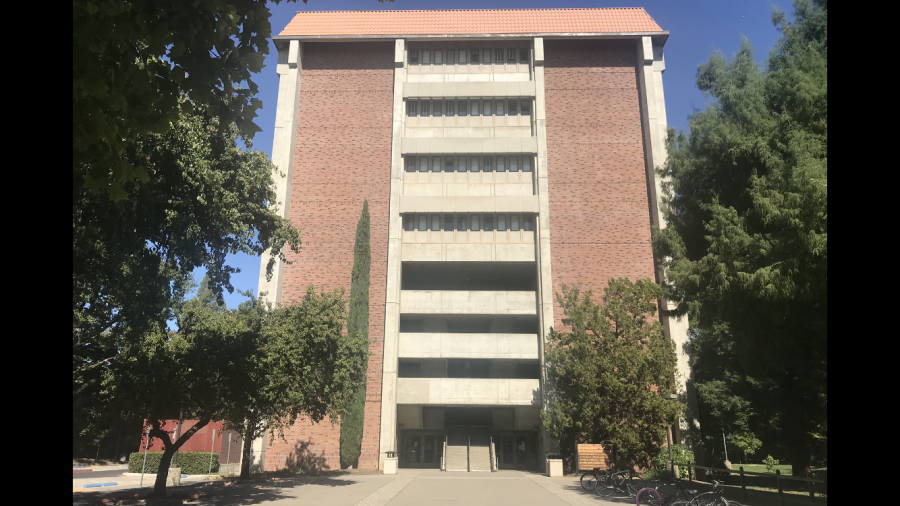Chico State is currently undergoing plans to renovate Butte Hall, the second-largest building on campus and home to many different departments. These renovations, set to start in summer 2021 and end by summer 2023, will displace many professors during its prolonged construction.
While there are concerns about where these professors will go, there are also concerns about how Chico State plans to deal with the asbestos problem in Butte Hall during its renovations.
Butte Hall was built in 1972, a year before California banned the use of asbestos in spray-on material for fireproofing and insulation purposes. Many other buildings that were constructed before this ban also contain asbestos, such as Whitney Hall and Meriam Library. Asbestos concerns are focused on Butte, however, due to how the asbestos was applied.
“The problem was that the Fire Marshall did not think they had sprayed the coating thick enough, so he ordered them to do it again,” said Mark Stemen, a geography and planning professor at Chico State.
Stemen has been vocal about the campus’ asbestos issue for years. “Unfortunately, the mechanical, such as heating and air conditioning, plumbing and electrical was already being installed.”
When asbestos was used as a spray, it would normally be sprayed onto raw steel, as it can stick to that material. The spray cannot stick to tin, which is what the mechanical elements of Butte Hall are made up of.
“The problem is that the asbestos has fallen off the mechanical and is sitting on top of the ceiling tiles and floating around in that space,” Stemen said.
Chico State’s Asbestos Management Plan, published in 2016, says that asbestos-containing materials “do not pose a health hazard if left intact. Nevertheless, activities that have the potential to disturb ACM must be carefully managed to prevent fibers from becoming airborne and creating an inhalation hazard.”
The issue with Butte Hall is not due to unmanaged activities. The ACM in the building was disturbed due to the way it was applied.
“If asbestos was applied properly at the time of application it does not become voluntarily airborne,” Stemen said. “If, however, it is applied improperly… gravity disturbs it… The problem is that this stuff is just falling off on its own.”
Because of this issue, many people have been exposed to airborne asbestos, which can lead to a plethora of health problems.
The National Cancer Institute states that asbestos fibers that are breathed in can get trapped in the lungs for an extended period of time. These fibers can cause scarring and inflammation of the lungs, which can lead to different lung-related issues.
According to the National Cancer Institute, “there is sufficient evidence that asbestos causes mesothelioma (a relatively rare cancer of the thin membranes that line the chest and abdomen), and cancers of the lung, larynx, and ovary.” While mesothelioma is relatively rare, it is the most common form of cancer associated with asbestos.
In 2012, two Chico State professors, Andrew Dick and Tami Kilpatric, both died due to lung-related cancers. Dick, who was 47, died in May, while Kilpatric, who was 51, died in September.
These deaths sparked concerns about the safety of Butte Hall. Testing was done to check the air quality of the building. According to Stemen, however, testing was not done correctly.
“A standard technique that they will do is to go around with a leaf blower and blow in the rooms to stir up the dust,” Stemen said. “The university won’t let them do that. They just want them to stick the nozzles in front of the vents to see if there’s anything coming through the vents.”
There is not a lot of communication between the university and professors regarding the asbestos, according to Stemen.
“They actually know where the overspray was and where the overspray is falling and they won’t tell anyone that,” Stemen said. “The dean of my college does not know where the dangerous rooms are.”
The current plan for Butte Hall’s renovations, listed and described in the Butte Hall Feasibility Study, lists abatement as one of their tasks.
“It’s good that they’re finally gonna take care of this because it’s been a health hazard forever,” Stemen said.
Jessie Imhoff can be reached at newseditor@theorion.com or on Twitter @JessieReports






